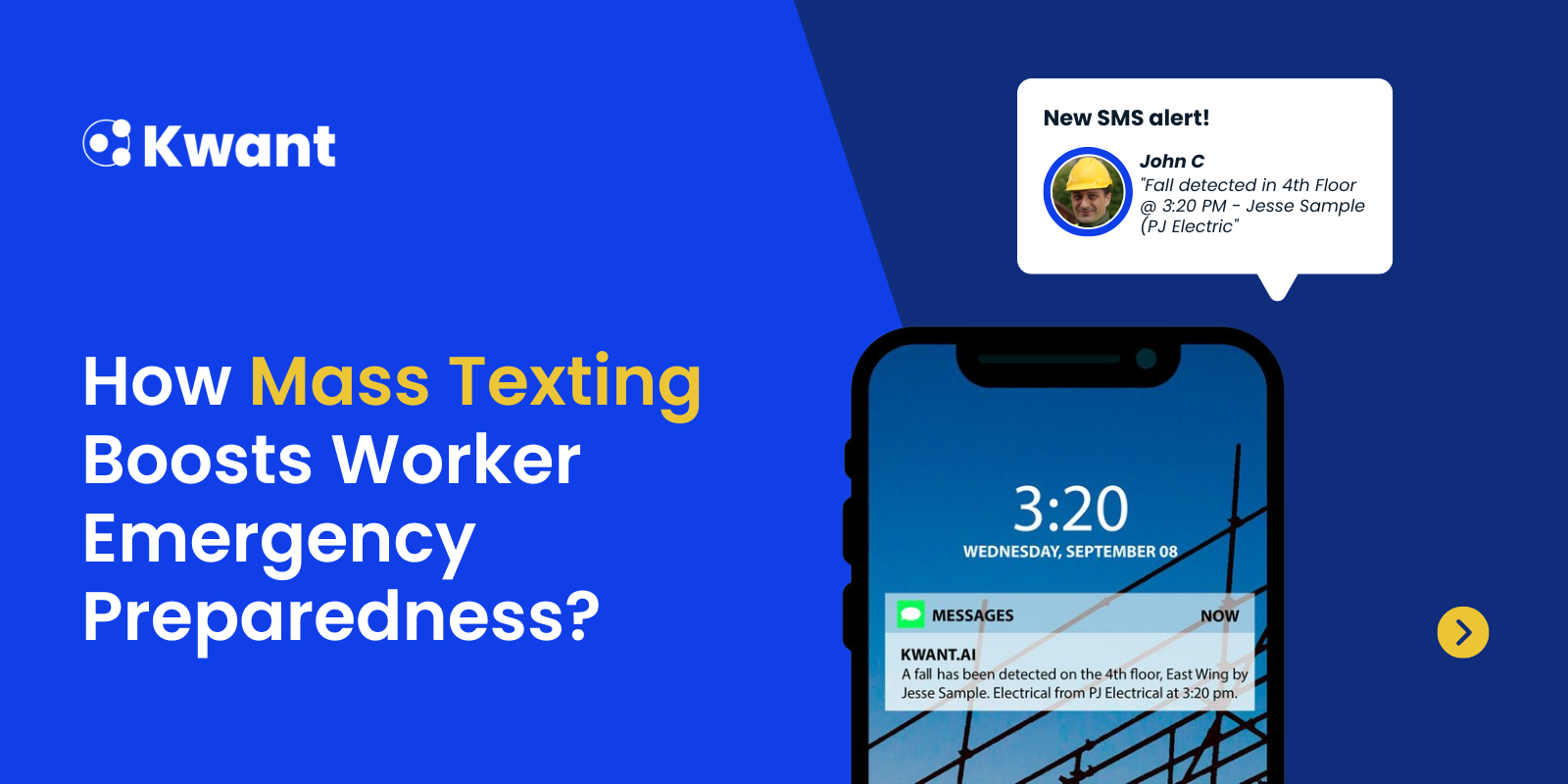Safety is one of the most important aspects of construction and, over the years, continues to improve. Even though standards have improved over the years, there is always a need to improve worker safety due to different job environments around the world.
Due to Covid-19, smart safety wearables rose due to necessity. The market of wearable technology in North America continues to grow every year from $15B in 2020 to $61B in 2022 and is estimated to reach $181B in 2030.
What are safety wearables?
Safety wearables are pieces of technology that supports active alerting for potential or perceived risk in an environment with actionable solutions. A great example of safety wearables are smart-safety badges or hard hat tags with simple sensors that buzz or alert when a worker is injured or walks into a high-risk zone.
Depending on the level of alert, management and select responders can follow up within seconds.
Many safety wearables connect to a workplace system that provides proactive and reactive insights based on movement monitoring. Many safety wearables have unique solutions that provide worker safety in different environments and can be worn throughout the body.
Why are safety wearables important?
In short, too many workplace accidents and fatalities happen a year. According to the U.S. Bureau of Labor Statistics, in 2021, there was an increase of 5,191 fatal workplace injuries compared to 4,764 in 2020.
OSHA’s most cited fines in 2022 were fall protection, hazard communication, ladders, respiratory protection, scaffolding, lockout/tagout, Industrial trucks, fall protection training, personal protective gear, and machine protection.
OSHA fines and violations aren’t cheap either, they can range from $15,000 to upwards of $156,000 per violation. Learn more on OSHA’s website.
Benefits of safety wearables in construction
Due to the dangerous nature of construction sites, many owners and contractors are utilizing safety wearables for their workforce in their projects. We want our workforce to go home safely to their family.
Traditional safety equipment for construction will continue to be a necessary piece of the safety puzzle, but new devices need to be introduced so we can adapt properly. Safety wearables are meant to help the worker become safer and more productive rather than inhibit them.
Some benefits of safety wearables in construction include fall detection, SOS alerts, near-miss detection from vehicles or equipment, and restriction of high-risk zones, to list a few. The system that connects to safety wearables provides data-driven insights that support proactive and reactive safety alerts.
Most safety wearable devices are easy-to-use and require little assistance, so the worker is not distracted from their job and management can rest a little knowing their team is safe. The safer the jobsite the more production
Safety wearables for construction
- Smart safety badges
- Smart hard hats/tags
- Smartwatches
- AR glasses
- Geo-tagged/cooling safety vests
- Heated jackets
- Exoskeletons
- Powerboots
Standard safety equipment for construction
- Hard hats
- Face masks
- Protective earmuffs
- Safety glasses
- Gloves
- Scaffoldings
- Scaffolding nets
- Standard/fall protection vests
Industries benefiting from safety wearables
As mentioned above, construction sites are very dangerous, and every jobsite has a different set of rules and requirements to pass, so we can just be present on-site.
Many industries that involve manual work tend to benefit a great deal from safety wearables. Industries that greatly benefit from safety wearables are construction, manufacturing, industrial, healthcare, mining, oil & gas, and more.
If you are a contractor looking for effective solutions like smart safety wearables for your workforce or trade partners, try a demo with Kwant. Schedule a time for an immersive demo and see how to create the safety culture you need.
.svg)












%20(1).svg)














